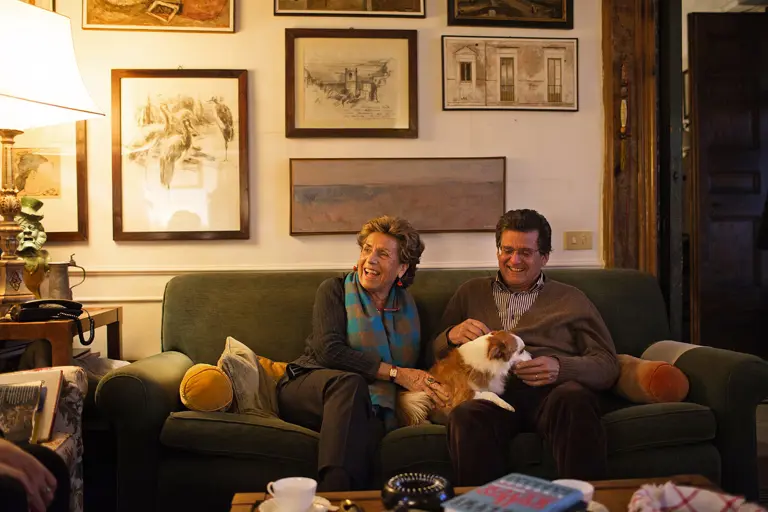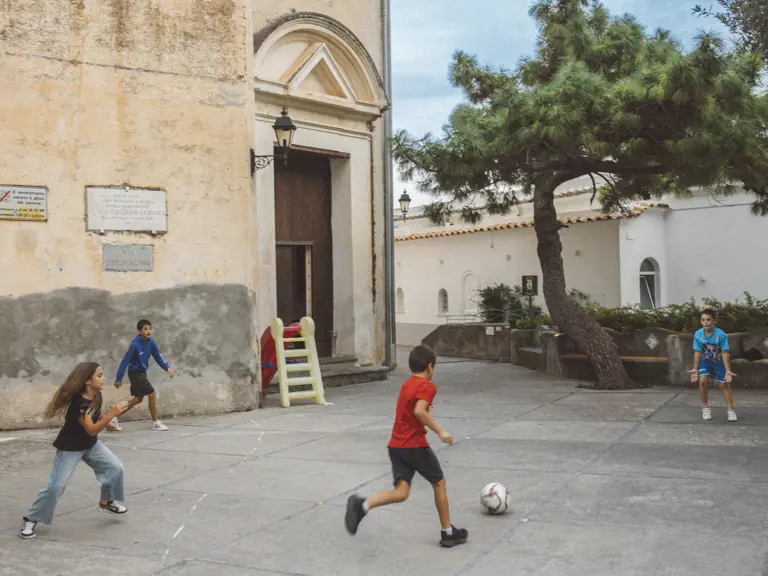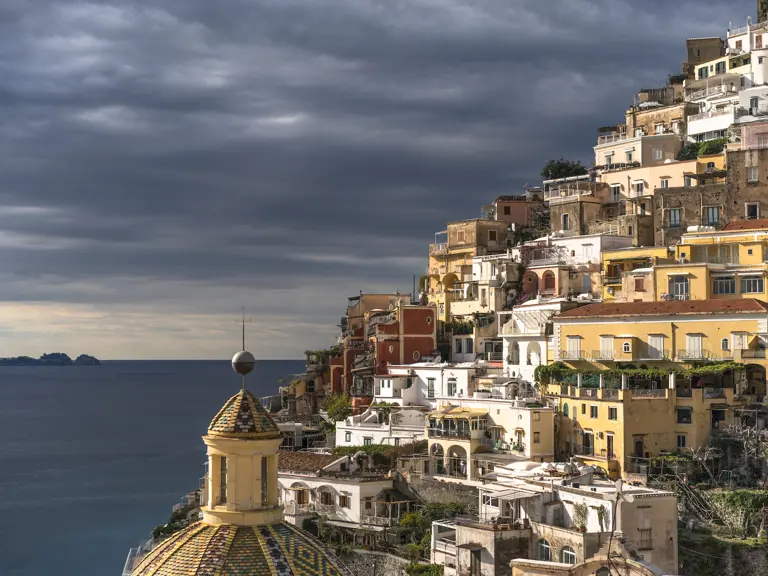POSITANESI: LENI & MARIO ATTANASIO
11.10.2016 POSITANO
One of these, the private residence of the remarkable Raimonda Gaetani, featured in an earlier Sirenuse Journal post. Another is Palazzo Murat, an imposing yet graceful eighteenth-century mansion that stands amidst verdant gardens in the crowded centre of Positano, just above the beach, emanating aristocratic ease, oblivious to daytrippers.
The eighteenth century was one of Positano’s historical high water marks, a time of relative prosperity for an Amalfi Coast town that had strong trading links with North Africa, the Ottoman Empire and the Orient. Built in around 1750 on the foundations of a Benedictine convent by a rich merchant in the Neapolitan Baroque style of Luigi Vanvitelli, the palazzo later passed into the hands of the man whose name it now bears, Joachim-Napoléon Murat. One of Napoleon’s most trusted lieutenants and confidants, Murat married the emperor’s sister Caroline Bonaparte in 1800 and eight years later was created King of Naples.
History tells us that what was then Positano’s most distinguished residence was designated as Murat’s summer residence after his coronation; what is less clear, says current owner Mario Attanasio, is whether he ever actually spent any time here, or even saw the place.
A retired dentist, Attanasio lives with his wife Leni on the top floor of the Palazzo, which his family has owned for three generations. The rest is a hotel, celebrated not only for its old-school positanese hospitality but also for the cultural initiatives that have been hosted here over the years, from al fresco classical music concerts to the prestigious ‘Léonide Massine’ dance award. Created in 1969, this annual celebration of the art of dance has been closely associated with Palazzo Murat ever since the 1972 edition, when Franco Zeffirelli turned up one evening with four house guests in tow – Gregory Peck, Claudette Colbert, Liza Minelli and Gore Vidal.
Leni and Mario, pictured above with their dog Micky, have seen Positano change radically with the advent of mass tourism, but their suite of rooms in this historic palazzo bear witness to the town’s other, more cultured soul, one that is sustained by the cluster of permanent and temporary residents who form a social network invisible to many visitors. It’s a heritage that is visible here in the ancient ceiling beams with their fading papiers peints decoration, in the heirloom antiques that fill every corner of the house, in the original 18th-century doors and in the artworks that line the walls, many of them painted by post-Cubist landscape artist Michele Theile, born in Positano in 1935 to German Jewish emigré parents.
The couple talk to me about the beauty of Positano in winter, about Leni’s youthful enchantment with the resort and fateful beach meeting with Mario, about the 1950s ‘invention’ of the town as a holiday destination, about the days – before their time, I hasten to add – when one could only arrive on mule back. As I sip my tea, I am reassured by the presence, here, of this inner Positano, with its social grace, easy elegance and deep cultural roots. Long may it last.
Le Sirenuse Newsletter
Stay up to date
Sign up to our newsletter for regular updates on Amalfi Coast stories, events, recipes and glorious sunsets



